9 Surprising Facts About Norwegian
Did you know that Norwegian is considered one of the easiest languages for English speakers to learn? This may sound surprising because, let’s face it, Norwegian isn’t often “up there” on the list of modern foreign languages to learn when you’re considering a course. But we think Norwegian is an incredible language for anyone to try to learn.
To twist your arm a little, here are some of our favourite fascinating facts about the Norwegian language to pique your interest.
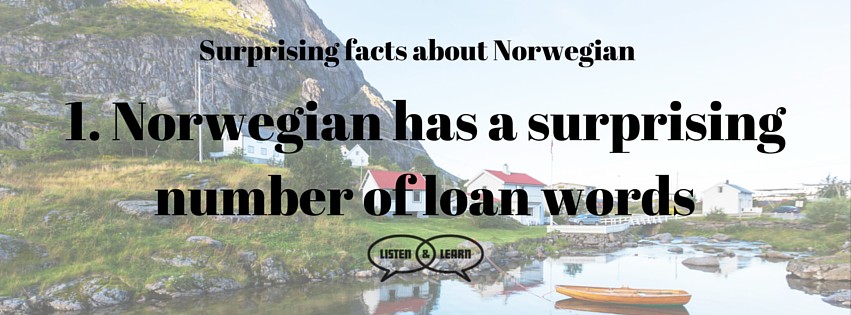 Yes we know. English is renowned for polluting the languages of the world with words like ‘email’ and ‘webcam’. But Norwegian has actually loaned English a few words too. Some examples we like are: berserk, lemming and slalom.
Yes we know. English is renowned for polluting the languages of the world with words like ‘email’ and ‘webcam’. But Norwegian has actually loaned English a few words too. Some examples we like are: berserk, lemming and slalom.
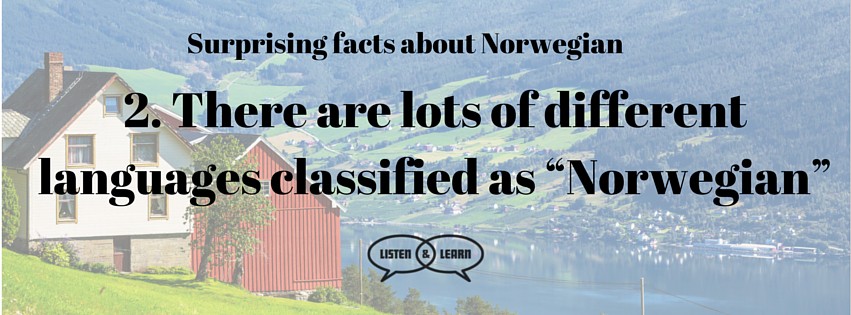 “Norwegian” is actually a little misleading, for there are a number of languages that fall under this rather ‘umbrella-like’ term and are considered Norwegian. There is Bokmål (Book Norwegian, official), Nynorsk (New Norwegian, official), Riksmal (‘national language’) and Hognorsk (High Norwegian), to name the more well-known ones. Nynorsk and Bokmål provide a basis for the written form of Norwegian but for the spoken one, this varies dialectically all over the country.
“Norwegian” is actually a little misleading, for there are a number of languages that fall under this rather ‘umbrella-like’ term and are considered Norwegian. There is Bokmål (Book Norwegian, official), Nynorsk (New Norwegian, official), Riksmal (‘national language’) and Hognorsk (High Norwegian), to name the more well-known ones. Nynorsk and Bokmål provide a basis for the written form of Norwegian but for the spoken one, this varies dialectically all over the country.
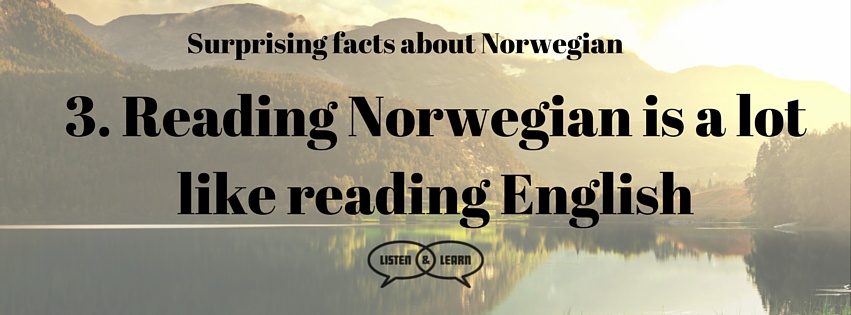 Because of the large number of cognates in Norwegian, you will be surprised to find that reading a simple newspaper article would actually come pretty easy to you. Some words are identical, such as bank, over and problem, while some are close enough to guess, like velkommen (welcome), av (of) and skrive (write).
Because of the large number of cognates in Norwegian, you will be surprised to find that reading a simple newspaper article would actually come pretty easy to you. Some words are identical, such as bank, over and problem, while some are close enough to guess, like velkommen (welcome), av (of) and skrive (write).
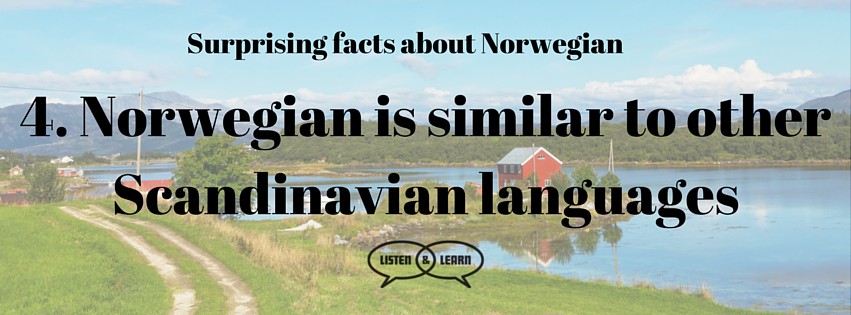 Because of the closeness between Norwegian, Swedish and Danish, there is a lot of fluidity between the languages. Norwegians are able to understand around 88% of spoken Swedish, and 73% of spoken Danish. Conversely, Swedes understand 48% of Norwegian and the Danes 69%.
Because of the closeness between Norwegian, Swedish and Danish, there is a lot of fluidity between the languages. Norwegians are able to understand around 88% of spoken Swedish, and 73% of spoken Danish. Conversely, Swedes understand 48% of Norwegian and the Danes 69%.
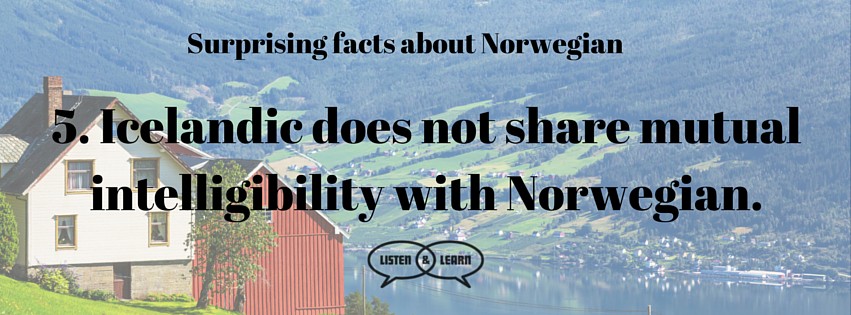 And why is this surprising? Well, Norwegian seafarers settled Iceland, the two languages are somewhat closely related. However, despite both Norway and Iceland being under Danish rule for some time, the isolation of Iceland means that the Danish influence was limited and their language is closer to Old Norse than Norwegian. Which means that the good people of Iceland can read the Sagas of the viking eras with ease, whilst those of Norway need patience and a good dictionary to do so.
And why is this surprising? Well, Norwegian seafarers settled Iceland, the two languages are somewhat closely related. However, despite both Norway and Iceland being under Danish rule for some time, the isolation of Iceland means that the Danish influence was limited and their language is closer to Old Norse than Norwegian. Which means that the good people of Iceland can read the Sagas of the viking eras with ease, whilst those of Norway need patience and a good dictionary to do so.
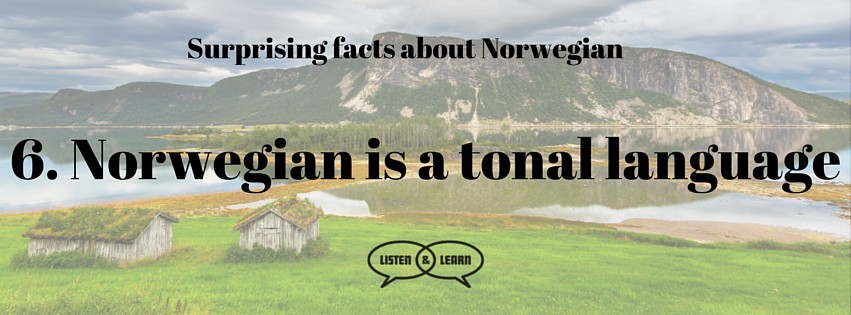 Norwegian is a bit exotic compared to the other European languages as it is a tonal language or described as having a pitch accent. To the untrained ear this sounds like singing and you’ll have to go as far away as China to hear a similar spoken word. It is often used to distinguish between things like homonyms, but we love how it makes the language sound so lyrical!
Norwegian is a bit exotic compared to the other European languages as it is a tonal language or described as having a pitch accent. To the untrained ear this sounds like singing and you’ll have to go as far away as China to hear a similar spoken word. It is often used to distinguish between things like homonyms, but we love how it makes the language sound so lyrical!
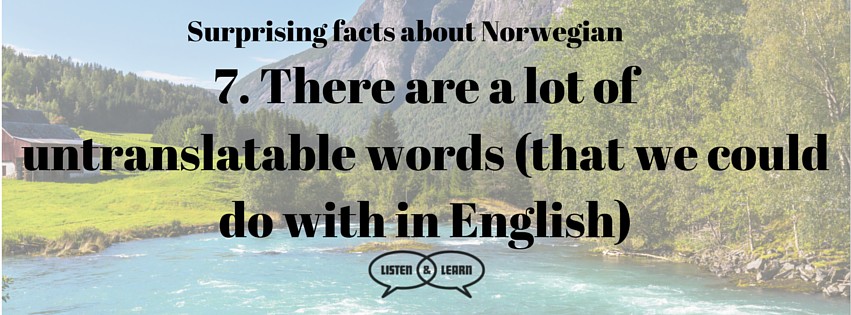 There are three in particular that stand out for us in Norwegian and we think the English language would be better for having them. Glad i deg, a kind of ‘I have affection for you’ phrase that doesn’t lead to any awkward expectations. Takk for sist, translating as ‘thanks for the last time’ and is used for when you bump into someone that you haven’t seen for a while. And pålegg which is all the stuff that you put on top of an open sandwich.
There are three in particular that stand out for us in Norwegian and we think the English language would be better for having them. Glad i deg, a kind of ‘I have affection for you’ phrase that doesn’t lead to any awkward expectations. Takk for sist, translating as ‘thanks for the last time’ and is used for when you bump into someone that you haven’t seen for a while. And pålegg which is all the stuff that you put on top of an open sandwich.
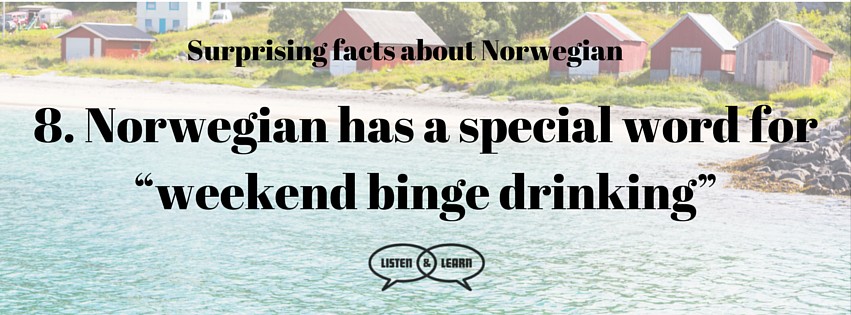 Unlike the rest of us who just do this as a matter of course, a good dose of weekend drinking is lovingly named Helgefylla to make it an actual event rather than one of those things that just “happens”.
Unlike the rest of us who just do this as a matter of course, a good dose of weekend drinking is lovingly named Helgefylla to make it an actual event rather than one of those things that just “happens”.
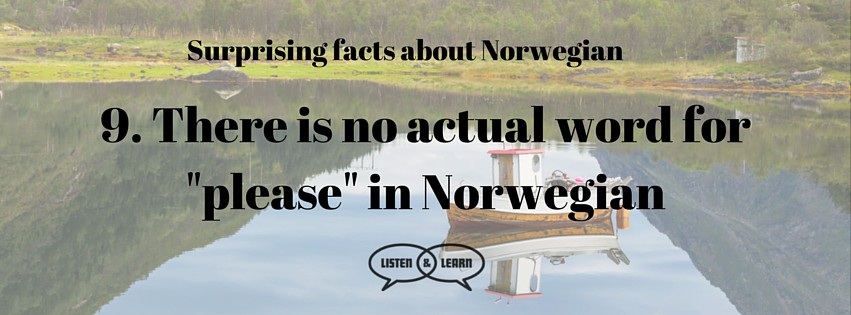 For those of us overly liberal with the use of the word please, this might stop you in your tracks. Sure, there are phrases that more or less mean the same thing: venglest (most friend-ily) and ver så venleg (very kind). Norwegian tends to be a more polite language overall, so perhaps it can be forgiven for lacking a simple please. For example, the presumptuous are you is always replaced with can you - a subtle change, yes, but politer than ours, nonetheless.
For those of us overly liberal with the use of the word please, this might stop you in your tracks. Sure, there are phrases that more or less mean the same thing: venglest (most friend-ily) and ver så venleg (very kind). Norwegian tends to be a more polite language overall, so perhaps it can be forgiven for lacking a simple please. For example, the presumptuous are you is always replaced with can you - a subtle change, yes, but politer than ours, nonetheless.
So you see what we mean. Norwegian is a lovely language to learn full of nuances and novelties. Are you interested? Of course! To pique your interest a little further, here’s a little survival Norwegian. But why not take it a step further? Contact us and see what language courses we have available for you!


